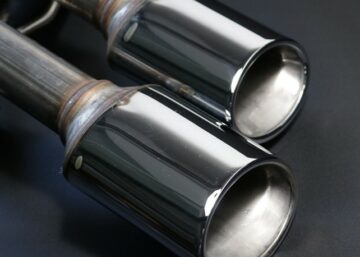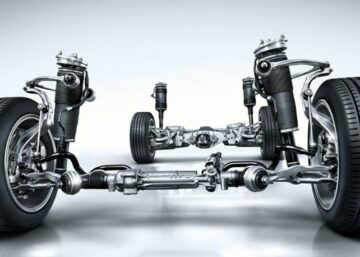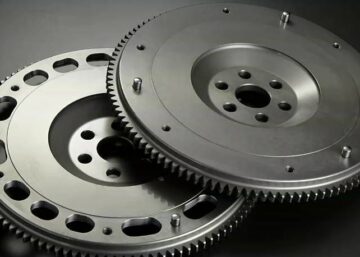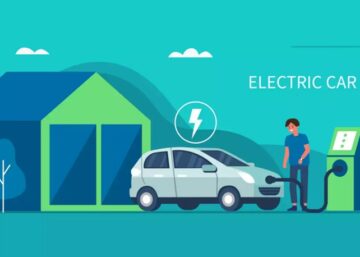When defining the aesthetics of an automotive vehicle, the quality of lighting is a major factor that comes into play. With major advancements in the design process in the automotive sector, automotive lighting prototyping has revolutionized. Traditional lighting utilizing halogen or high-intensity discharge (HID) lamps are gradually becoming extinct due to their limitations from an aerodynamics and aesthetics perspective. Thus, major manufacturers moved towards LED technology due to its long lifespan, resistance to strain, better efficiency, and aesthetic appeal as shown in the featured image.
The use of lighting systems in cars is so widespread. The use of headlights, fog lamps, turn indicators, tail lamps, high brake lights, license plate lights and many more is widespread for ease of driving, safety, and improving the aesthetics as well. In fact, automotive lighting defines the personality of any vehicle.
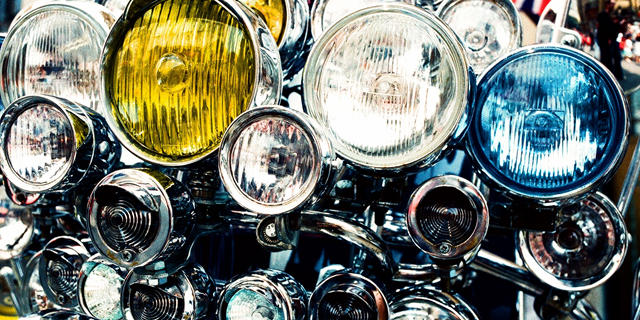
How Automotive Lighting Prototypes Aid the Industry
As a design signature for several automotive manufacturers, extensive research and prototyping are essential for automotive lighting. Let us discuss some of the key factors that prototyping helps to counteract in this niche.
Evaluation for Assembling
Although computer-generated CAD models and assemblies are monumental in the design process, they are in no way guaranteed the perfect fitting or viewing experience of the parts in real life, too. For instance, reflectors are prototyped and bonded to headlight housings to create lamp clusters. The complete prototype assembly is then mounted onto vehicles for performance evaluation under real-life viewing angles and various lighting conditions.
Co-molded and Over-molded Assemblies
In the design of automotive lightings, the processes of co-molding and over-molding various colors of plastics together are common. There is a need of male and female threaded parts for holding these sub-assemblies together in the form of a larger assembly onto the vehicle. By prototyping these assemblies, a comprehensive evaluation of design integrity, strength, and aesthetics are achievable. Most importantly, the integrity of the assemblies under a comprehensive vibration analysis is important since assemblies always have a weak point when it comes to rigorous vibrations.
Evaluation from a Cost Perspective
Computer-Aided Manufacturing plays a key role in determining ideal parameters for production. However, in the case of lighting components, the determination of actual cycle times and yields is important. This depends on various factors like required temperature and pressure conditions, cooling rates, shrinking ratios, and distortion. Thus, automotive lighting prototypes help deduce various modifications in production cycles to bring down costs and improve profit margins.
Lifecycle Assessment
Buyers always expect reliable automotive manufacturers to build lighting components that last long. Car components face a wide array of environmental conditions. Lighting components of vehicles need to look sleek yet provide sturdiness. Assessment of material performance is thus vital, and prototypes serve a great purpose for the lifecycle assessment team.
Meeting Regulations
Last but not the least, prototypes are of particular importance when lighting models need to be verified by regulatory authorities. Metrics like intensity, visibility, shape, prominence, and others need fulfillment under tight regulations.
To summarize, let us have a look at the following diagram:
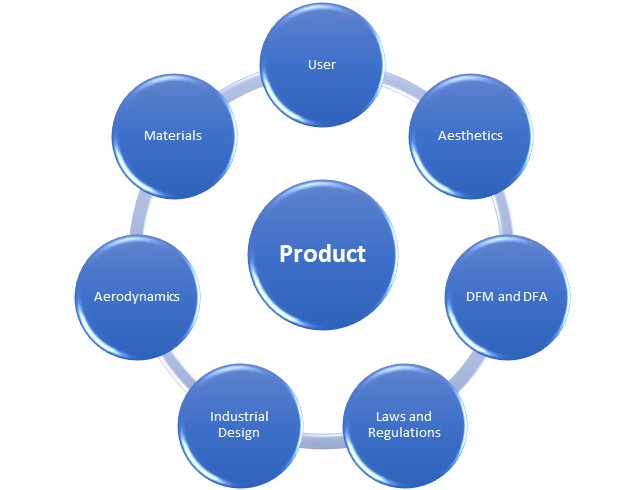
Materials for Automotive Lighting Systems
Before diving into the main parts involved in automotive lighting systems and their specifics, let us first discuss the various material considerations. We will use a table to systematically summarize all specifics that are important for a decision-maker in this industry.
| Aspect | Polypropylene (PP) | Acrylonitrile Butadiene Styrene (ABS) | Polyethylene (PE) | Polyoxymethylene (POM) | Polycarbonate (PC) |
| Chemical Resistance | ✓ | ✓ | ✓ | ✓ | |
| UV Resistance | ✓ | ✓ | |||
| Durability | ✓ | ✓ | |||
| Strength | ✓ | ||||
| Stability at low temperatures | ✓ | ||||
| Transparency | ✓ |
With a clear picture now in perspective, we will discuss each of the materials in depth now.
Polypropylene (PP) is one of the most chemically stable plastics with excellent hydrophobic properties (water resistance). The use of Black PP is common for the best UV resistance.
Acrylonitrile Butadiene Styrene (ABS) is a durable plastic with good hydrophobic properties. It can resist some chemicals quite well. The properties of this plastic resemble that of rubber and its rigidity is a major factor when in consideration for applications requiring impact resistance.
Polyethylene (PE) is a type of plastic with good chemical resistance. Its particulars include high strength and usage in applications where aesthetics come into play. This plastic is particularly unique for its manufacturability in a variety of densities. For instance, LDPE (Low-Density Polyethylene) and HDPE (High-Density Polyethylene).
Polyoxymethylene (POM) is known for its stability for applications in low-temperature conditions. Additionally, it is rigid, stiff, consists of good chemical resistance, and hosts excellent yield strength.
Polycarbonate (PC) is particularly known for its usage in areas where transparency is important. It also consists of good UV and weather resistance.
Parts of an Automotive Lighting System
Each lighting component of a vehicle is divided into sub-parts that make an entire assembly. We will discuss two major assemblies in terms of technical aspects along with details of its sub-parts too.
Head Lamp Assembly
A headlamp assembly consists of various sub-parts. The headlamp is perhaps the most important in terms of design since the reliability of this part means safety for the buyer and road users too. Let us discuss the parts and their details.
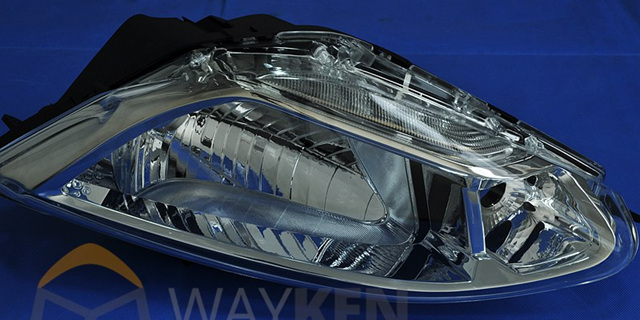
- Lens: The most important aspect is clarity, scratch resistance, and resistance to UV rays. Therefore, for prototyping, common materials include PC.
- Bezel: This part requires resistance to heat dissipation and high surface quality. Moreover, for aesthetics, this part should have a metalized appearance. Thus, the use of ABS is common for this part’s prototype due to its durability and rigidity.
- Reflectors: This part perhaps faces the maximum heat dissipation because its function is to take concentrated light from the source and dissipate it as an evenly distributed luminance. For this part, strong resistance to heat, good rigidity, impact resistance, and metallic finish is important. The material that fulfills all these criteria optimally is ABS and aluminum for prototyping.
- Housing: This is the base for holding all the parts in place. This part needs to be dimensionally stable and heat resistant. Thus, the use of ABS in prototyping housing is common.
- Lightguide: Transparency and UV resistance are two core factors for material selection in this part. As aforementioned in the table, PC serves greatly where considerations for transparency and UV resistance are simultaneously important.
Tail Lamp Assembly
The role of the tail lamp assembly is crucial in the automotive lighting system. It conveys information like braking, turning, and reversing. Reliable automotive lighting prototype specialists can meet the various prototype requirements for all the parts of a tail lamp assembly. Broadly, these requirements include good heat resistance, resistance to weather effects, impact resistance, vibrance, and prominence.
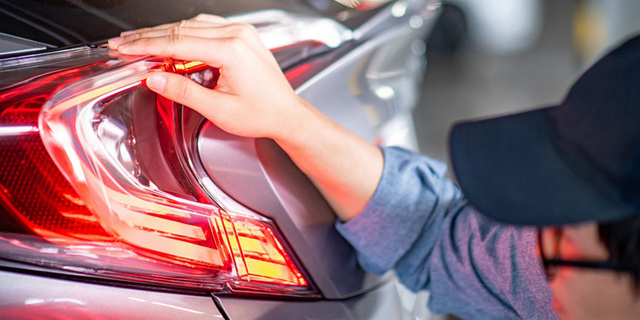
Let us discuss the main parts of this assembly and its specifics.
- Inner Lens: This part needs to be as transparent as possible for the best optical properties. PC is a good option for prototyping this part to ensure transparency and UV resistance.
- Outer Lens: Just like the inner lens, the outer lens also needs to fulfill the requirements of transparency and UV resistance. Additionally, it needs to be scratch resistant as well to bear wear and tear. PC and Polymethylmethacrylate (PMMA) is a good choice for this part’s prototyping.
- Housing and Frame: Just like the headlamp assembly, the housing and frame require dimensional stability and heat resistance. ABS fulfills this requirement optimally.
- Lightguide: Any part involving the transmission of light rays needs to have clarity and UV resistance to prevent yellowing. Therefore, the PC is the optimal choice for this part.
Factors to Look Out When Choosing Prototyping Service
Keeping in view the discussion on the automotive lighting industry in this article, a decision-maker must have a sound knowledge about how to choose prototyping service. Let us recommend some factors to look out for in this regard.
Credibility to provide comprehensive support
A good automotive lighting prototyping service can support the entire design cycle of a product i.e. from proof of the conceptual design to the final part prototype. A comprehensive and complete automotive lighting prototyping solution is the key to choose the right prototyping service.
Sound and compelling track-record
Prototyping service that is known to provide professional services to well-known OEMs and suppliers is always a plus point. Seasoned knowledge and experience in this field is prior, so it is necessary to look for prototyping service with an excellent record of accomplishment.
Four key parameters for lamp lens prototyping
It has better to pay attention to these four metrics when evaluating prototyping service:
- Comprehensive and extensive CNC machining facilities. Three, four, and five-axis CNC milling machines are vital for fabricating quality prototypes. Moreover, the available stroke length should be extensive, and the manpower should have sound knowledge about machining clear plastic parts without blemishing the surface.
- The mating surfaces on plastic and acrylic surfaces are clearly visible. However, from an aesthetics point of view, these mating lines should not be visible. Good prototyping solutions providers can provide effective splitting and bonding solutions to ensure a sparkling finish.
- As discussed in the article, the transparency of a lens is most important. Thus, skillset in hand-polishing matters a great deal.
- A prototype solutions provider needs to fulfill the requirement of over-molding in automotive lighting. Techniques like urethane casting are important for over-molding and you should definitely look for these when choosing a service.
High Precision of Optical Components
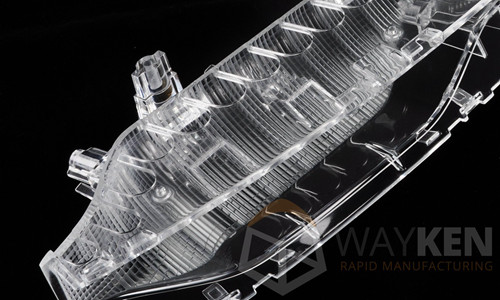
Prototypes are for verification and validation purposes for designers to test their ideas in real-time testing environments. The success of their designs largely depends on the precision of acquired prototypes. Therefore, you should for a service that supplies 5-axis CNC machining with high precision (preferably up to R0.1mm and diamond cutting tools to achieve remarkable finish). This will help the designer to effectively evaluate various parameters of optical components like luminosity, clarity, and resistance to UV rays.
Moreover, surface finishing is monumental in this niche. Look out for premium and precise surface finishing tolerances e.g. +/-0.025mm.
Aluminum and Steel Components
Components like reflectors have parts made from aluminum. Thus, the rapid tooling of aluminum and soft steel components is vital when choosing prototyping service. Rapid injection molding of aluminum and soft steel parts is a plus point as it can help you achieve your prototypes within 2-5 weeks.
Furthermore, electroplating and EDM-assisted machining are vital to meet requirements of accuracy in automotive lighting prototypes.
